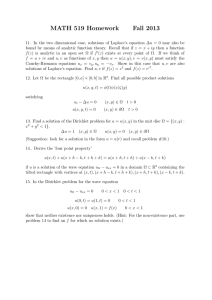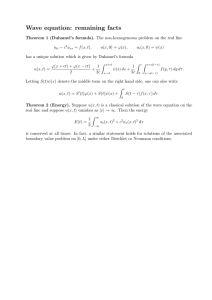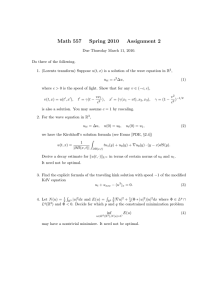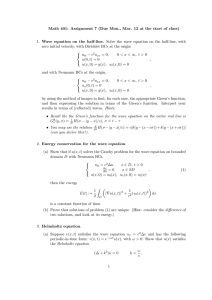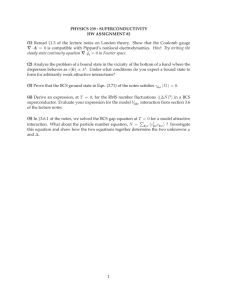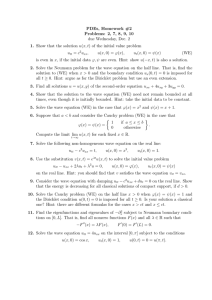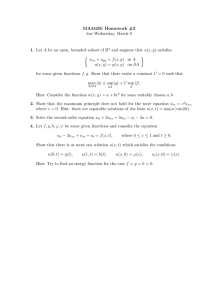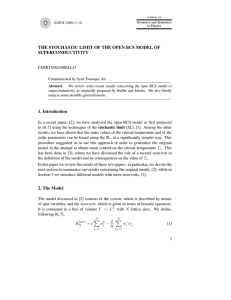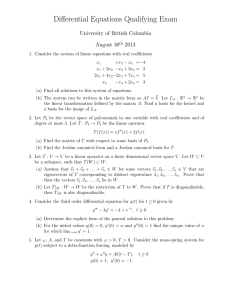Math 257/316 Assignment 8 Due Mon. Mar. 23 in class
advertisement
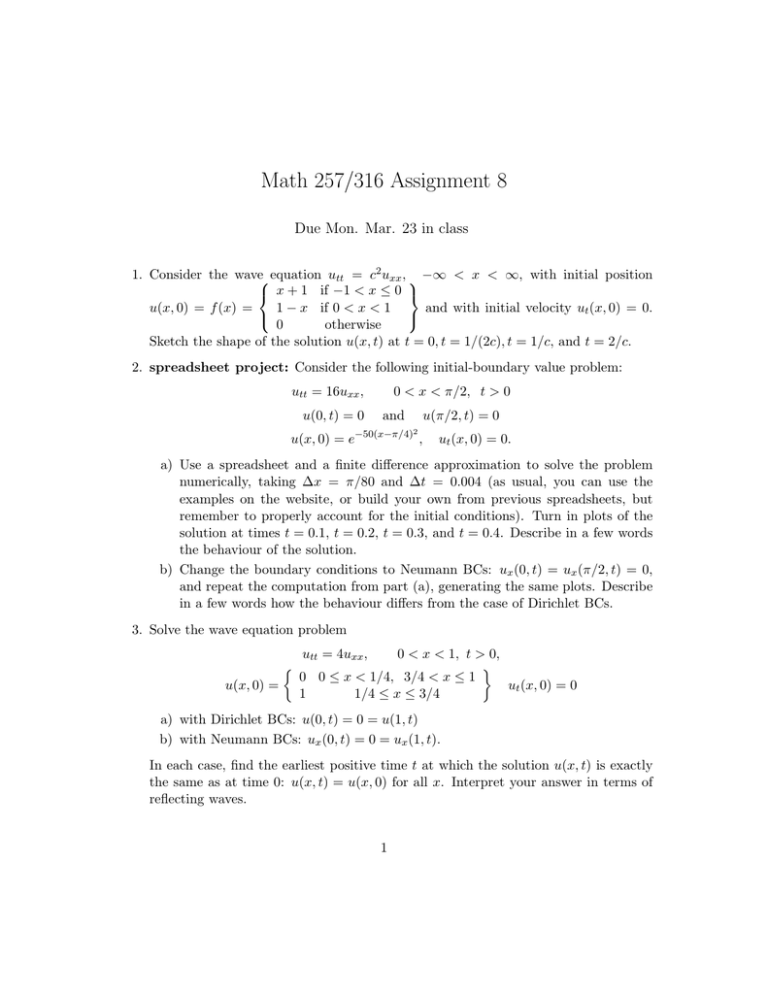
Math 257/316 Assignment 8 Due Mon. Mar. 23 in class 1. Consider the waveequation utt = c2 uxx , −∞ < x < ∞, with initial position x + 1 if −1 < x ≤ 0 1 − x if 0 < x < 1 u(x, 0) = f (x) = and with initial velocity ut (x, 0) = 0. 0 otherwise Sketch the shape of the solution u(x, t) at t = 0, t = 1/(2c), t = 1/c, and t = 2/c. 2. spreadsheet project: Consider the following initial-boundary value problem: utt = 16uxx , u(0, t) = 0 0 < x < π/2, t > 0 and −50(x−π/4)2 u(x, 0) = e u(π/2, t) = 0 , ut (x, 0) = 0. a) Use a spreadsheet and a finite difference approximation to solve the problem numerically, taking ∆x = π/80 and ∆t = 0.004 (as usual, you can use the examples on the website, or build your own from previous spreadsheets, but remember to properly account for the initial conditions). Turn in plots of the solution at times t = 0.1, t = 0.2, t = 0.3, and t = 0.4. Describe in a few words the behaviour of the solution. b) Change the boundary conditions to Neumann BCs: ux (0, t) = ux (π/2, t) = 0, and repeat the computation from part (a), generating the same plots. Describe in a few words how the behaviour differs from the case of Dirichlet BCs. 3. Solve the wave equation problem utt = 4uxx , u(x, 0) = 0 < x < 1, t > 0, 0 0 ≤ x < 1/4, 3/4 < x ≤ 1 ut (x, 0) = 0 1 1/4 ≤ x ≤ 3/4 a) with Dirichlet BCs: u(0, t) = 0 = u(1, t) b) with Neumann BCs: ux (0, t) = 0 = ux (1, t). In each case, find the earliest positive time t at which the solution u(x, t) is exactly the same as at time 0: u(x, t) = u(x, 0) for all x. Interpret your answer in terms of reflecting waves. 1
